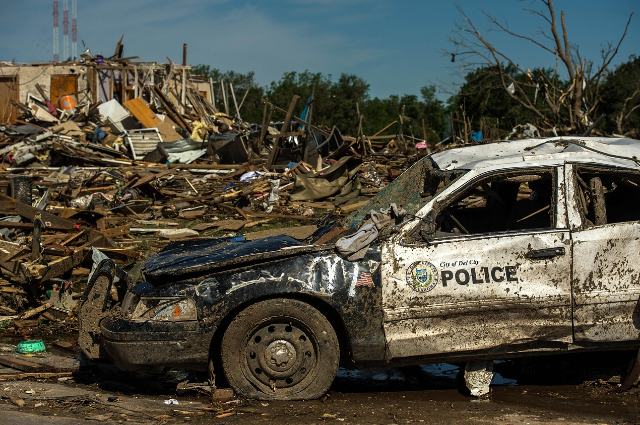
In a world before satellites and before meteorological departments came into existence, people still knew when the next rain would arrive. They watched the stars, heard the river flowing, understood the language of trees, and read what the skies meant. Their responses might have been spiritual, communal, and poetic, but whatever they did resulted in practical life and property-saving results. As William Shakespeare said,
“The Earth has music for those who listen!”
For instance, in 2011, a 6.9 magnitude earthquake in Sikkim crumbled concrete buildings, but traditional homes built from just mud, clay, wood, and hay stood firm. Why? Because communities there haven’t forgotten what their ancestors did during natural disasters. Similarly, fishers in Tamil Nadu, during the 2004 tsunami, read the wave patterns and felt the wind intensifying, and even before the government was alerted, they started alerting people, which helped save countless lives.
So, let's get to know more about how civilisations survived the fiercest calamities of their times and look into solutions we can borrow from them to manage similar situations in today’s time. Maybe we’ll get to know something new!
Ritual, Resilience, and Reverence: Ancient Wisdom in Action
Here are some famous instances of how humanity’s grit to survive defeated catastrophic occurrences.
Tokugawa, Japan
This was a human-induced natural disaster, wherein centuries of deforestation finally gave way to droughts in the 1600s. However, instead of submitting to this event and fleeing, the Tokugawa shogunate chose to repair the damage done. Cutting trees was strictly banned, and double cropping and new crops were sown to reduce pressure on the land, with the villagers also planting new trees.
“Predation, exploitation, regeneration—Japan’s forestry history is a rhythm of damage and healing.”
~ArcGIS StoryMaps
Thera Eruption, the Minoan Civilisation
A massive volcanic eruption on the island of Thera (modern-day Santorini), followed by tsunamis triggered by the eruption, led to massive panic among the people. And we aren’t even talking about the CE era; this was around 1600 BCE! Their unique techniques of survival allowed them to navigate the disaster effectively, at a time when there was no concept of international aid. Besides shifting settlements inland, they built multi-level architecture and used heavy stones and rocks during construction that withstood seismic shocks without vibrating an inch! Although what other protocols they followed may not be known, their evacuation and disaster management systems were top-class, as is evident by the fact that just a few human bodies were found in affected areas.
“The eruption may have inspired the legend of Atlantis, showing how disaster memory became myth.”
~The Archaeologist
Annual Nile Floodings in Ancient Egypt
The Nile used to flood and still floods almost every year, and the Egyptians developed methods to tackle it. First of all, they marked their calendars based on star movements (like the heliacal rising of Sirius). Next, they built basins and canals nearby to allow the floodwater to irrigate fields, converting the natural disaster into a blessing in disguise. They even invented the Nilometer, a stone gauge, which measured water levels. Technicians of that time!
“Floods were not feared; they were managed through ritual, engineering, and celestial observation.”
~History.co.uk
Droughts in India
Droughts were common in regions like Gujarat and Rajasthan. And the citizens were ready for them. Community stepwells (baolis, vavs) were made to access groundwater during dry seasons. These were even linked with temples, reinforcing spirituality among people. Rainwater harvesting methods like maintaining ‘Johads’ and ‘Kunds’ are used to date as artificial aquifers.
“Stepwells were not just water sources; they were symbols of survival and social resilience.”
~VidyaOcean
Wisdom for the Modern World
As climate change is becoming a serious issue and disasters, both man-made and natural, grow more frequent, with the biggest being the Covid-19 pandemic lately, we look to technology for solutions, without realizing that our past holds more powerful answers. After all, today’s technology has been crafted by the same people who once predicted how the wind moved!
“The systemic documentation of traditional knowledge and the blend of modern technology and ancient prudence make disaster strategies more viable.”
~SpringerLink
Earthquake-resistant homes in Northeast India, Japan, New Zealand, and other countries used bamboo frames, lime mortar, and lightweight roofing, besides educating the masses. For floods or droughts, tanks, stepwells, ponds, canals, and excellent drainage systems allowed people to use water to their advantage during a calamity. For deforestation issues, people protected trees by spiritual beliefs, linking them to some divine presence, tying sacred threads to the tree, or simply hugging them, like the Chipko Movement in India.
And all is not lost yet! Indigenous communities still bank on ancestral techniques like observing wind and water patterns, bird and animal behaviour, cloud formations, tree growth, soil moisture, and much more. For eg, in 2019, catastrophic bushfires raged across Australia. Aboriginal communities used the ancient ‘mosaic burning’ technique of igniting a low-intensity controlled fire, creating a boundary beyond which the bushfire didn’t spread. Similarly, people in Nepal and Tibet predict floods, allowing early evacuation of people. In 2010 and 2016, the Maori knowledge of managing earthquakes allowed the government to guide recovery after earthquakes occurred.
Final Reflection
Our ancestors didn’t just build homes and monuments; they built relationships with the land that shall continue till eternity. Their techniques involved being compassionate, kind, and understanding of nature’s way of guiding them. They used solutions provided by nature itself to tackle its problems. If we just pause and don’t boast about our technological advancements, we may be able to listen to what the past has in store for us, and how it can act as a guide during unprecedented situations!
